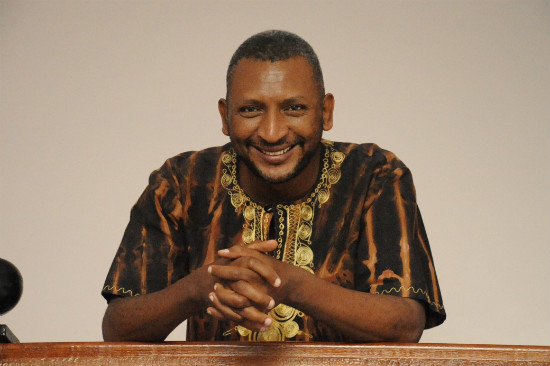
Dance of the Jakaranda, the new novel by Peter Kimani, is a layered and moving exploration of the history of Kenya, juxtaposing a story of conflict during the nation’s colonial period with a narrative set in its early days of independence. It’s a novel in which the central characters constantly surprise the readers, and Kimani’s explorations of history encompass multiple sides of art and infrastructure. I talked with Kimani via email about the writing of, and history behind, his book.
Dance of the Jakaranda is primarily set in two time periods: one around the turn of the 20th century, and one in the 1960s. What prompted you to focus on these particular points in history?
Indeed, Dance of the Jakaranda is set two time frames: around 1900 and 1963. This was quite deliberate as I wanted to focus on the founding of the Kenya colony by the British at the turn of the last century, and on the cusp of independence in 1963, when African leaders were taking charge. I was interested in exploring what it meant to be Kenyan in those two time frames. As you might have discovered, the novel is concerned with perceptions of identity, and some of the main protagonists are Indian. I wanted to examine how the shift in the balance of power impacted on their perceptions of the self.
How did you settle on the railroad as a central aspect of your novel?
The railroad is a powerful motif. It is a literal and metaphorical road that allows the British access into the Kenyan hinterland. It’s also a complex symbol of destruction and progress: communities are pulled asunder to pave way for its construction; out of the rail, new townships sprout and form a tapestry of the new nation, as the train’s stations evolve into urban settlements. And the rail enterprise was the singular project that helped unite different races, whose interactions form the backbone of the novel.
Have you found that Kenyan versus non-Kenyan readers of your novel have had different reactions to its take on Kenyan history?
The response to the Jakaranda has been overwhelmingly positive across the board. Non-Kenyans look at the craft behind the novel and the universal feel to some of its concerns. Some Kenyan critics have questioned why I focused on Indians of East Africa, not “Africans.” And I argue those Indians are part of the African collective. That’s what the novel actually seeks to confirm. In the final analysis, what starts as an exploration of what it felt to be Indian under the British or African administrations, becomes an examination of what it feels to be human.
All of the novel’s central characters go through significant changes, both in terms of their own circumstances and in terms of how sympathetic they are. When writing the novel, did any of these characters surprise you?
The book unfolds over a long period, about 70 years in all. So there was the expectation that the characters would evolve. I think two of the characters who surprised me the most were Nyundo and McDonald. They evolved in ways I wouldn’t have anticipated in the early drafts.
How much historical research did you need to do while preparing to write this novel? Was there anything that you uncovered that didn’t fit with this narrative but might show up in a different novel?
The Jakaranda is a history novel, so this required enormous amounts of archival research, library searches, interviews, etc. At some point, I realized I might spend the rest of my life researching but never get the novel written. So I just had to sit down and write the book, after all, I was inventing fiction, not re-writing history. There is a ring of contradiction to that statement; I think all historical fictions are concerned with history, or its initial rendering, hence the desire to offer another take of history as only creative writers can envision it.
Do you have a sense of what your next literary project will be?
My next project is another historical novel, set in Nairobi in the 1990s. It will be my first novel set in my hometown – all the others have been set outside the city— so I’m quite excited about that.
Photo: Yusuf Wachira
Follow Vol. 1 Brooklyn on Twitter, Facebook, and sign up for our mailing list.
